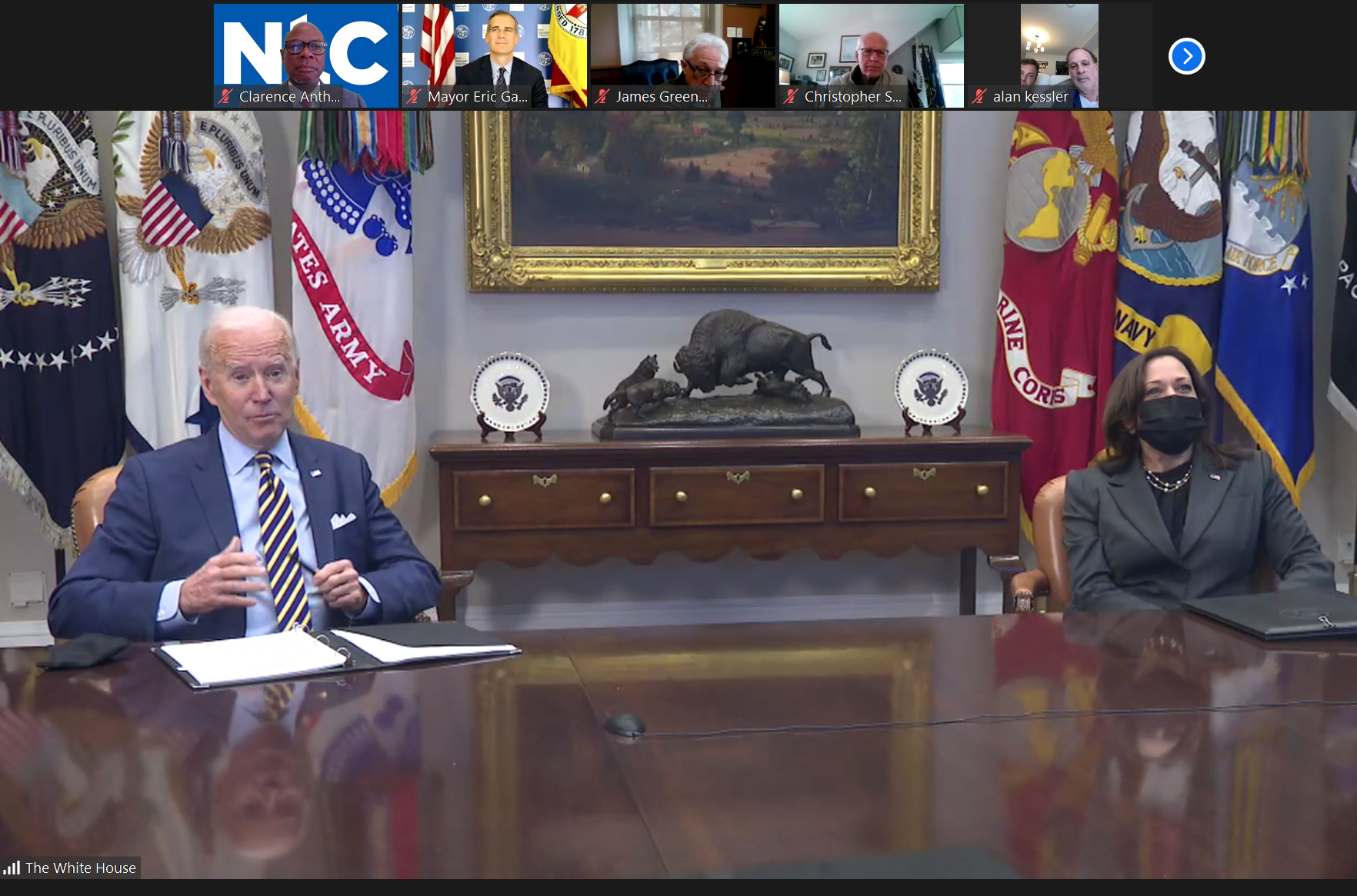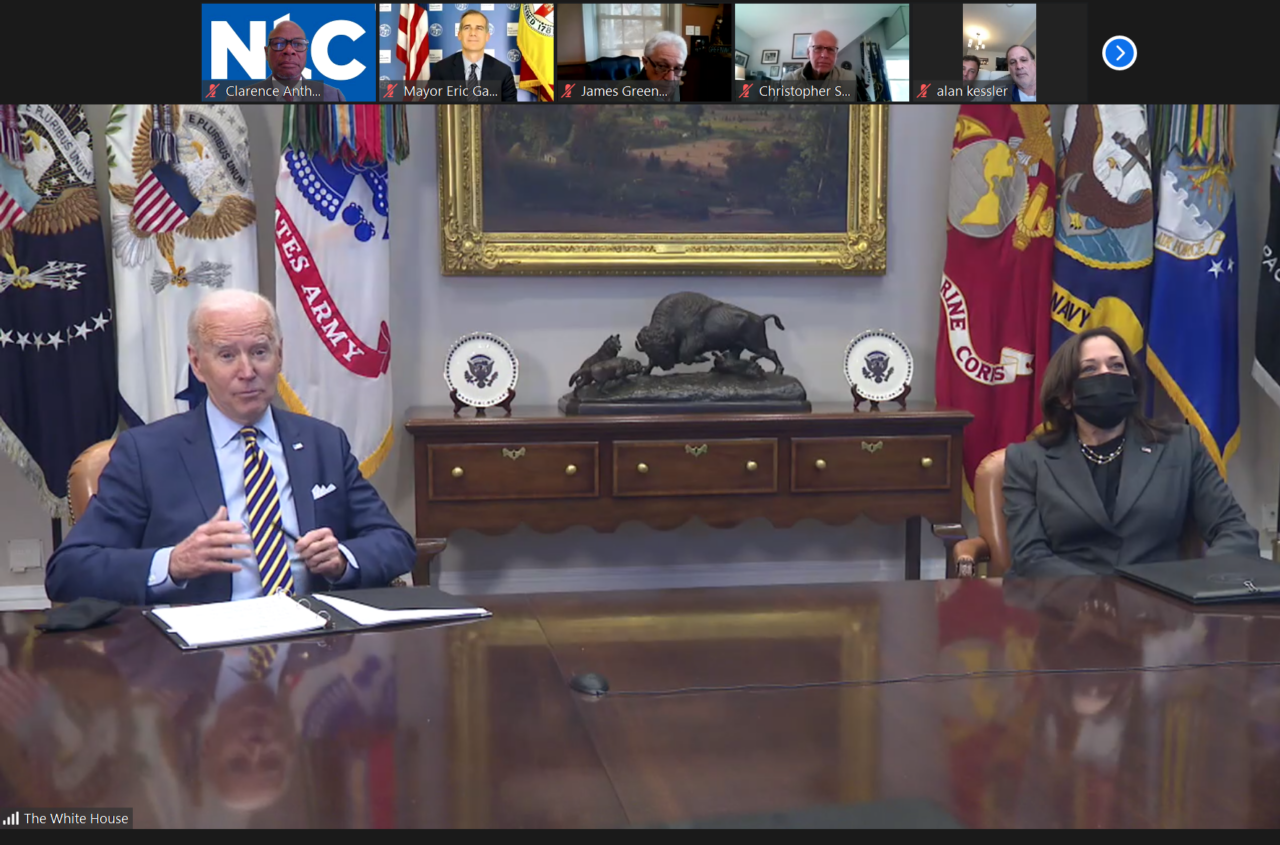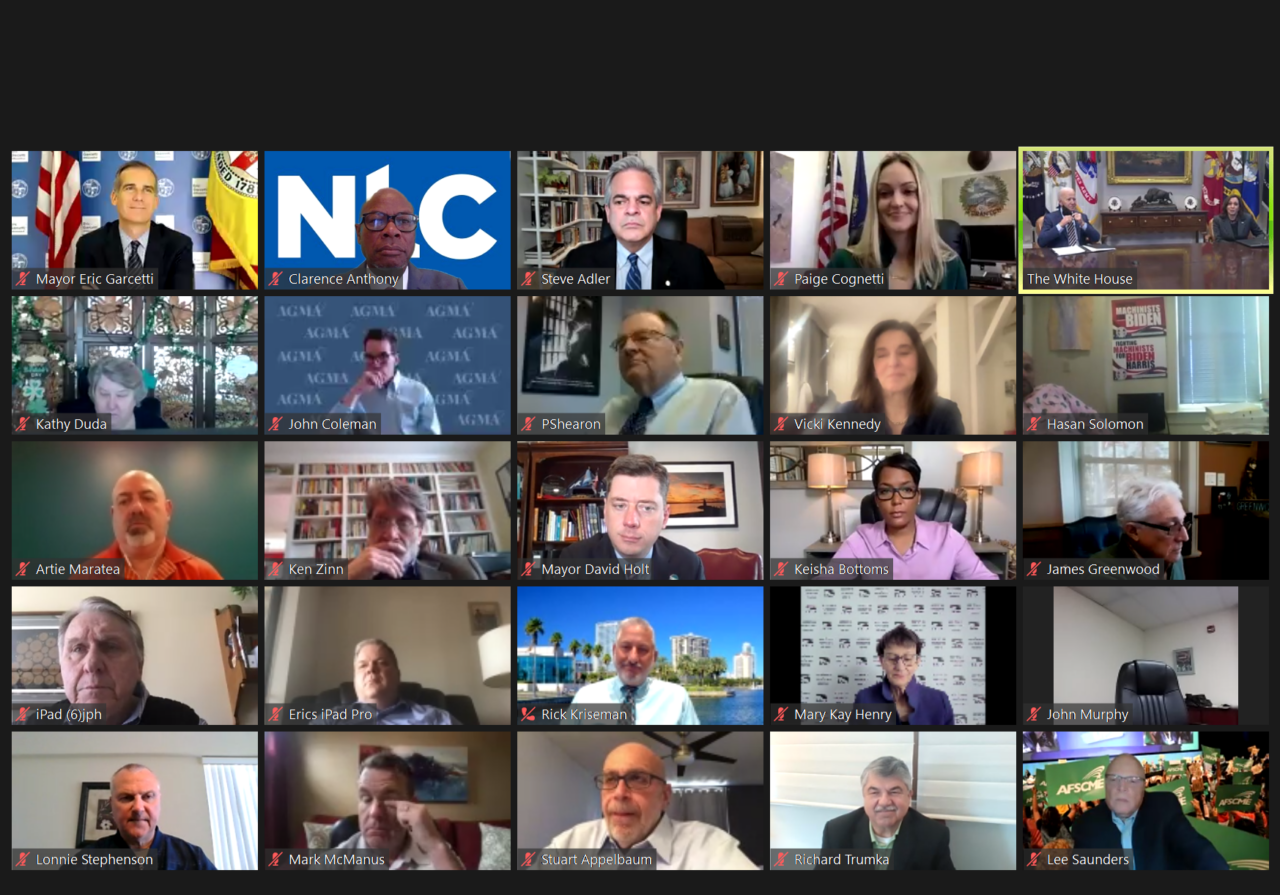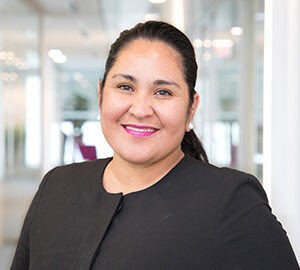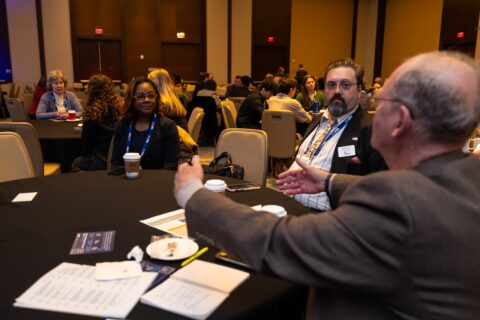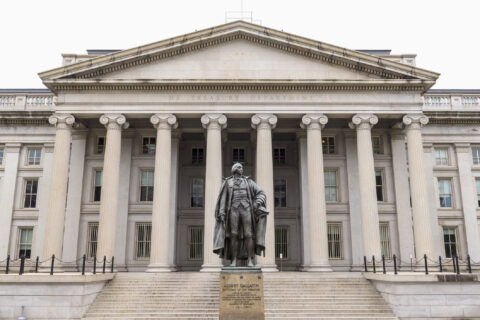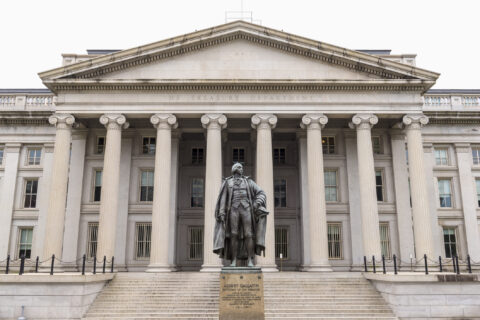On Thursday, March 11, nearly a year to the day that our nation shut down to stave off the fast-moving coronavirus pandemic, we marked another historic moment in the U.S. fight against COVID-19. President Biden signed the American Rescue Plan (ARP) Act into law. With the stroke of a pen, the President and Congress delivered historic, unprecedented and meaningful aid to America’s 19,000 cities, towns and villages. The National League of Cities’ year-long “Cities Are Essential” advocacy campaign resulted in $65.1 billon of direct aid to every city, town or village across the country. There would not be direct funding allocated to all municipalities without the relentless effort of NLC, state municipal leagues, and all of America’s local and community leaders.
This money will go a long way towards protecting the health and safety of residents, helping municipal workers, renters and businesses get back on their feet. For cities and towns, especially small and rural communities, this emergency intervention is a game changer. Local leaders have been on the frontline of the pandemic response for a year, working tirelessly with limited budgets and massive expenses to protect their communities from COVID-19. And although America still has a long road to recovery, this funding represents a critical step forward.
The federal government has asked cities to test for the virus, distribute vaccines, house and employ first responders and health professionals – and all the other amazing things cities do every day – and they will finally receive more support to do it. Local governments are the most trusted form of government, and federal aid for all 19,000 municipal governments – a FIRST for Washington – is repaying that trust. More than 200 million Americans live in our cities, towns and villages and the American Rescue Plan is an injection of hope for communities seeking to move forward in the weeks and months to come.
This massive legislation comes on the heels of a very successful Congressional City Conference (CCC), a year of incredible local advocacy, and a strong commitment of federal-local partnership to tackle our nation’s greatest challenges. CCC’s virtual Capitol Hill Day saw 350 local elected leaders from 37 states meet with 92 Members of Congress and 222 congressional offices to thank federal leaders for their support of ARP, share how direct funding will make a difference across the nation, and discuss plans for upcoming legislative priorities like infrastructure and workforce.
A Closer Look at the Historic ARP Legislation
Within the ARP, the Coronavirus Local Fiscal Recovery Fund provides $350 billion for states, municipalities, counties, tribes, and territories, including $130 billion for local governments split evenly between municipalities and counties. This funding will be released in two allotments, half in the next 60 days following enactment of the legislation and the second half 12 months after the first payment.
The $65.1 billion allocated directly to cities, towns and villages is being distributed through a modified Community Development Block Grant (CDBG) formula. Under the bill, direct funding means:
- The $65.1 billion is 100% federal funding that all 19,000 municipalities are entitled to,
- The $65.1 billion is not co-mingled in any way with state or county funds, and
- There are safeguards and penalties in place to discourage state interference or additional state mandates on the use of these funds.
Metro Cities
For all municipalities with more than 50,000 residents, funds will be made available directly by the U.S. Treasury. Grant amounts will be calculated by using the CDBG formula that measures population + poverty + housing instability.
Small Municipalities
For all municipalities with less than 50,000 residents, states are required to suballocate funding according to a simple per-capita formula. States that fail to suballocate funds that small cities are entitled to under the American Rescue Plan Act will be penalized by the U.S. Treasury department, which is authorized to clawback state funds by an amount equal to the funding not allocated to municipalities as required by the law.
Grant Estimates
Congress has created and refined estimates of payments to individual localities based on the best available data from the U.S. Census. However, the estimates do not reflect additional data that is only available at the state or local level. For instance, a funding cap on the size of grants for small municipal governments – or those with less than 50,000 residents – is not accounted for in current estimates.
Small Cities Cap on Grant Amount
The American Rescue Act includes a provision stating no city with less than 50,000 residents can receive a grant that is larger than an amount equal to 75% of their pre-pandemic budget, regardless of whether the estimates indicate an amount greater than that figure. This is not accounted for in the estimates because data on small city budgets is not systematically collected by any federal entity. We expect Treasury to provide a way for small cities and towns to certify what that cap amounts to for the municipality.
Other Provisions
Other important provisions include: the funding has no minimum population threshold for communities, can be used for replacing lost revenue, can be transferred between jurisdictions or to non-profit partners, and finally, does not expire until December 31, 2024.
For more information, visit NLC’s Federal Action Agenda on Stabilizing Local Government Operations.
What’s Next for America’s Essential Cities?
This is a time for cities to celebrate – but just for a moment. There is lots of work to do, to get this funding out the door, provide relief to renters, support small businesses, improve access to food for struggling residents, and bolster all the programs that have kept our hometowns afloat for a year.
The economic challenges of the pandemic are not yet behind us, as many communities, workers, and families are still struggling. COVID-19 case counts remain high, and individuals continue to suffer the economic harm caused by shuttered businesses. We must continue to fight for the recovery that communities of all sizes want to see. NLC will continue to lead with Congress to bring forward a robust recovery package that meets the needs of your city and residents, and your advocacy will continue to make the difference.
This is a time for states to work with cities, to continue to ensure every resident, family and business is represented and gets a chance to participate in the recovery of the American economy. The lasting impacts of the pandemic – empty office buildings, closed restaurants, college towns with population loss, canceled concerts and cruises – only underscore the critical nature of every level of government working together to get this funding directly to the local level.
This is a time for America to do more than survive; we can thrive. We must provide equitable access to the vaccine, we must prevent more furloughs and layoffs, we must continue to partner and support each other, and we must learn from the experiences of the pandemic to grow as a nation.
Now, with unprecedented and much overdue direct funding passed, our cities, towns and villages can respond, recover and rebuild our country and our communities.
